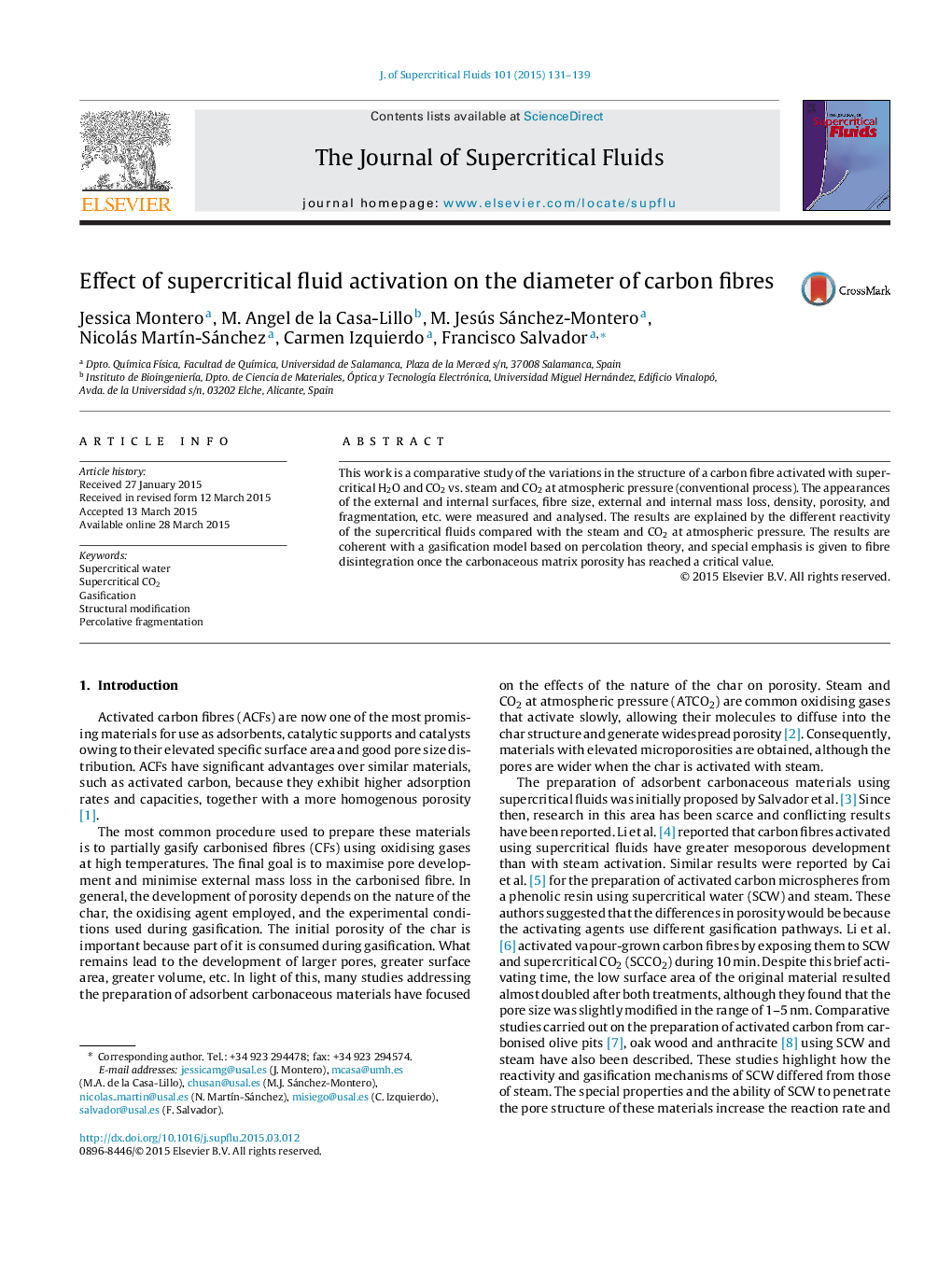| Article ID | Journal | Published Year | Pages | File Type |
|---|---|---|---|---|
| 230253 | The Journal of Supercritical Fluids | 2015 | 9 Pages |
•The reactivity of carbon fibres is greater towards SCW and SCCO2 than steam and ATCO2.•The gasification reaction with supercritical fluids is diffusion-controlled.•There is a critical porosity after which the fibre becomes fragmented.•A model of percolative fragmentation accounts for the different evolution of the porous structure.•The thinning of the fibre is due to a perimetral fragmentation brought about by external gasification.
This work is a comparative study of the variations in the structure of a carbon fibre activated with supercritical H2O and CO2 vs. steam and CO2 at atmospheric pressure (conventional process). The appearances of the external and internal surfaces, fibre size, external and internal mass loss, density, porosity, and fragmentation, etc. were measured and analysed. The results are explained by the different reactivity of the supercritical fluids compared with the steam and CO2 at atmospheric pressure. The results are coherent with a gasification model based on percolation theory, and special emphasis is given to fibre disintegration once the carbonaceous matrix porosity has reached a critical value.
Graphical abstractFigure optionsDownload full-size imageDownload as PowerPoint slide
